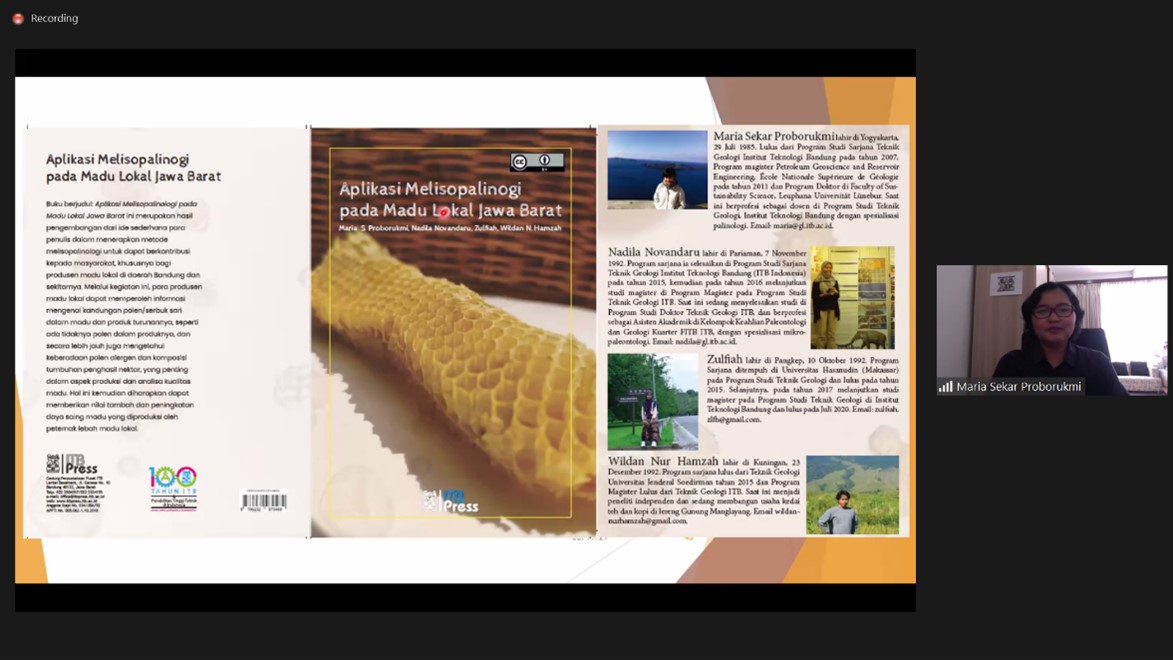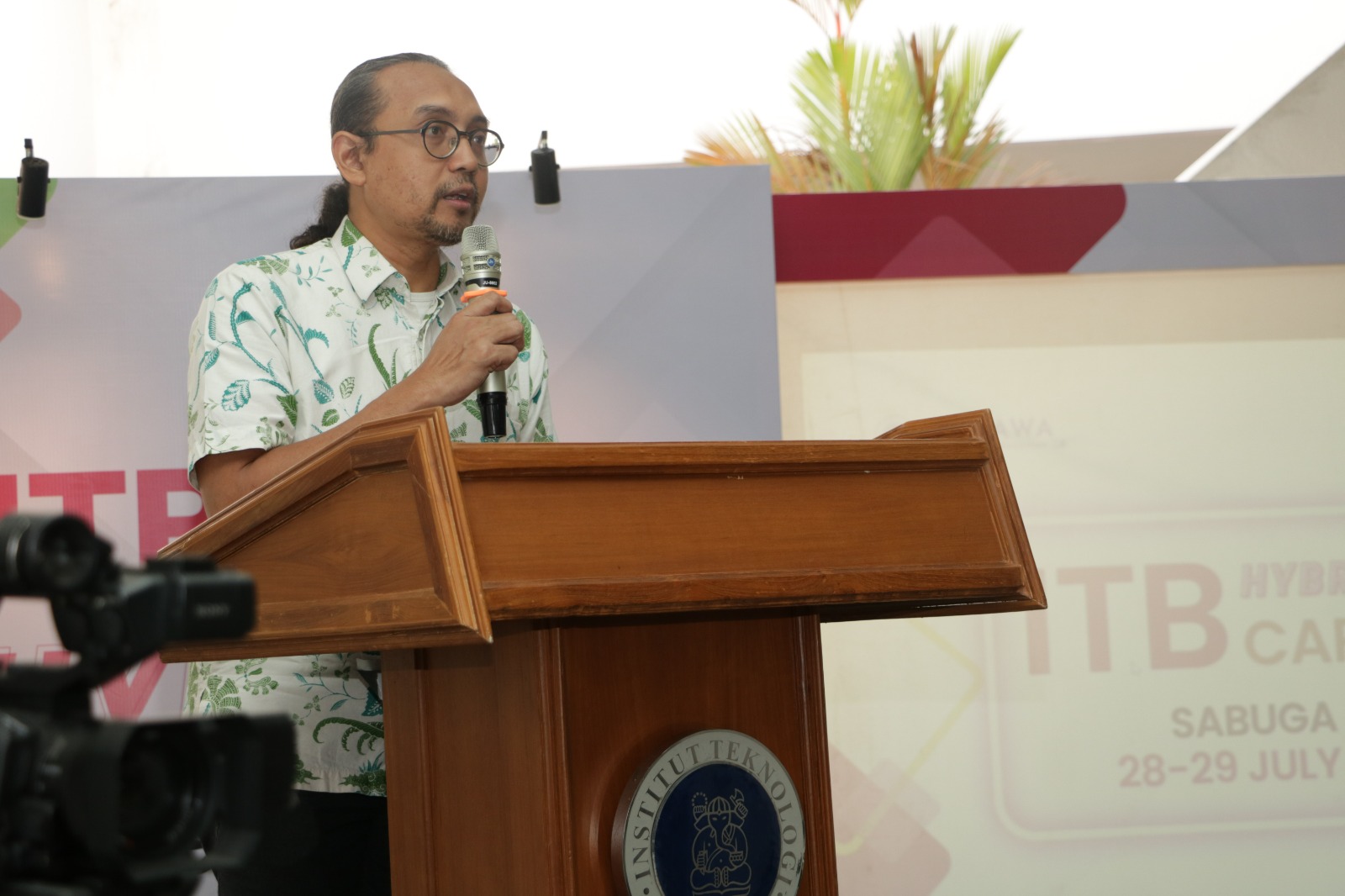Applying Palynology to Honey Production in West Java
By Adi Permana
Editor Adi Permana

BANDUNG, itb.ac.id — The Geological Engineering program in ITB held its 20th episode of the “Geologi ITB Menyapa” webinar series that discussed palynology. The event took place virtually through Zoom on Saturday (6/11/2021).
The materials were delivered by Dr.rer.nat. Ir. Maria Sekar Proborukmi, S.T., M.Sc., one of the professors from the ITB Geological Engineering Program. As part of the Paleontology and Quarternary Geology Research Group, she presented the topic about the application of melissopalynology to West Java’s local honey production.
The webinar began with an opening speech by the Dean of ITB Geological Engineering Program, Dr.Eng. Mirzam Abdurrachman, S.T., M.T. He highlighted the subject to be talked about as interesting because it sheds light on the less familiar branch of geological study. He also mentioned that the study successfully contributed to various researches that yielded many products.
Definition of melissopalynology
Melissopalynology is part of palynology that examines the pollens contain in honey. This method is the fastest and cheapest to determine the content of nectar from plants and the geographical origins of honey. Through this information, farmers can know the production time, conservation of nectar-producing plants, ecosystem restoration, branding, and ideal locations for increasing cultivation and production of honey. In addition, it can act as an indicator of the authenticity and quality of honey by detecting the presence of pollen as an allergen.
Cultivation process
Samples of honey are taken from Apis cerana, Trigona, Apis dorsata, and Apis melifera bees, each with different characteristics. Next, the samples enter the cultivation stage that consists of 5 phases. The first phase is completed by dissolving and mixing 10 ml of honey with 50 ml of hot aquadest (80-100OC) to speed up glucose dissolution. The second phase is the filtration of samples using a nylon sieve to separate the residue from organic substances. Then, the residue is rinsed 2-3 times with aquadest. After the glucose and other compounds are fully dissolved, the residue is filtered again using the nylon sieve and stored in a vial. Lastly, the samples enter the packaging phase.
This research that is part of the ITB PPMI (Program Penelitian, Pengabdian Kepada Masyarakat dan Inovasi/Research, Community Service, and Innovation Program) that has been conducted since 2020 and funded by LPPM (Institute for Research and Community Service) of ITB. By cooperating with five honey industries that produce canned honey in Bandung and its nearby regions, people involved also handed out guidebooks to farmers who wish to assist in the research.
The study results can help in the product-branding of honey, which focuses on its classification: uniflora and multiflora honey. Uniflora honey's plant composition is more than 45%. Examples include mango, kaliandra, and klengkeng honey that are produced by Apis dorsata. On the other hand, multiflora honey created by Apis Cerana contains less plant composition.
To this day, this research is still exploring the prospects of honey in Mekarwangi Tourism Village, Sindangkerta, West Bandung, where it is famous worldwide for its coffee. The research can bring awareness and insights to others regarding the pollen composition in honey, especially honey farmers in West Java. Maria and her team hoped that the popularity of honey can reach the same level of popularity as the coffee produced in Mekarwangi Village.
Reporter: Pravito Septadenova Dwi Ananta (Teknik Geologi, 2019)
Foto-foto: Tangkapan layar presentasi Dr. Maria Sekar Proborukmi
Translator: Ruth Nathania (Teknik Lingkungan, 2019)

.jpg)
.jpg)
.jpg)
.jpg)
.png)

